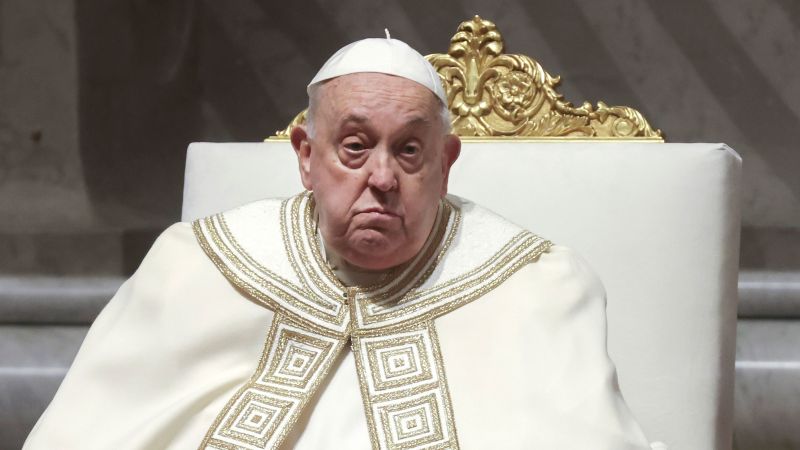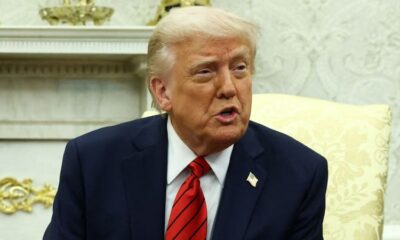CNN
—
The Trump administration is ready to recognize Russian control of Crimea as part of the US proposal to drive an end to the war with Ukraine, an official familiar with the framework told CNN on Friday.
Crimea, southern Ukraine, has been under Russian occupation since it was illegally annexed in 2014. Four other Ukrainian regions – Donetsk and Luhansk in the east and Kherson and Zaporizhzhia in the south – have also been partially occupied by Russia since its full-scale invasion in 2022.
There has been no immediate comment from Kyiv but the suggestion the US could recognize Russian control of Crimea is unlikely to be welcomed – Ukrainian President Volodymyr Zelensky said in March that his government would not recognize any occupied territories as Russian, calling that a “red line.”
Zelensky said at the time that the territories would “probably be one of the most sensitive and difficult issues” in peace negotiations, adding that, “for us, the red line is the recognition of the Ukrainian temporarily occupied territories as Russian. We will not go for it.”
The US proposal for an end to the war would also put a ceasefire in place along the front lines of the conflict, the source told CNN on Friday.
The framework was shared with the Europeans and the Ukrainians in Paris, France, on Thursday, the source said. It was also communicated to the Russians in a phone call between US Secretary of State Marco Rubio and Russian Foreign Minister Sergey Lavrov.
Despite US President Donald Trump’s claim that he would be able to end the war in Ukraine in one day, American attempts to reach a peace agreement have largely stalled in the face of Russian intransigence, leading to a growing sense of frustration in the White House.
After Rubio warned Friday that the US was ready to “move on” from efforts to bring peace to Ukraine within days if there were no tangible signs of progress, Trump offered a less hardline approach, saying that Rubio was “right” but projecting more optimism about the prospects of a deal.
Pressed on a timeline for the US to walk away, Trump said: “No specific number of days, but quickly, we want to get it done.”
The source that spoke to CNN on Friday said that there are still pieces of the framework to be filled out, adding that the US plans to work with the Europeans and the Ukrainians on that next week in London.
The Trump administration is simultaneously planning another meeting between Trump’s Middle East envoy Steve Witkoff and the Russians to get Moscow on board with the framework, the source said.
Russia has imposed a brutal and repressive regime on Crimea and its people over the past 11 years, human rights observers say, stomping out any sign of opposition.
The UN Human Rights Monitoring Mission in Ukraine has repeatedly reported on the human rights violations allegedly committed by Russia in occupied Crimea – from unlawful detentions, to sexual abuse and torture, to forcing people to send their children to Russian schools and training programs.
Russia has repeatedly denied accusations of human rights abuses, despite substantial evidence and victim testimonies.
Roughly 2.5 million people lived in Crimea before 2014 and many more would regularly visit the tourist hotspot, known for its beaches and nature reserves.
According to official data from the Ukrainian government, more than 64,000 have fled the peninsula to other parts of Ukraine since the annexation. However, Crimean NGOs estimate the number of refugees might be twice as high, as not everyone has officially registered with the government.
Meanwhile, Moscow has worked on its plan to “Russify” the peninsula. It put in place incentives to persuade Russian citizens to relocate to Crimea and the Ukrainian government estimated in 2023 that some 500,000 to 800,000 Russians had moved there permanently since it was annexed, with the number jumping sharply after the opening of the Kerch bridge that connects Crimea to Russia.
Maksym Vishchyk, a lawyer at Global Rights Compliance, a non-profit that advises the Ukrainian authorities on investigating and prosecuting international crimes, said Moscow has repeated the same pattern across other occupied territories.
“When Russia occupied the Crimean peninsula, it commenced a campaign of systematic targeting of communities or individuals it perceived as those who became an obstacle in the Russification campaign… with devastating effects on the social fabric in general, but also communities, families and individuals,” he told CNN in an interview last year.
“And Crimea has been kind of their playbook. Policies and patterns and tactics (Russia) applied in Crimea were then applied as well in other occupied territories. So, we see essentially the same patterns in all occupied territories, both since 2014 and since 2022.”






















